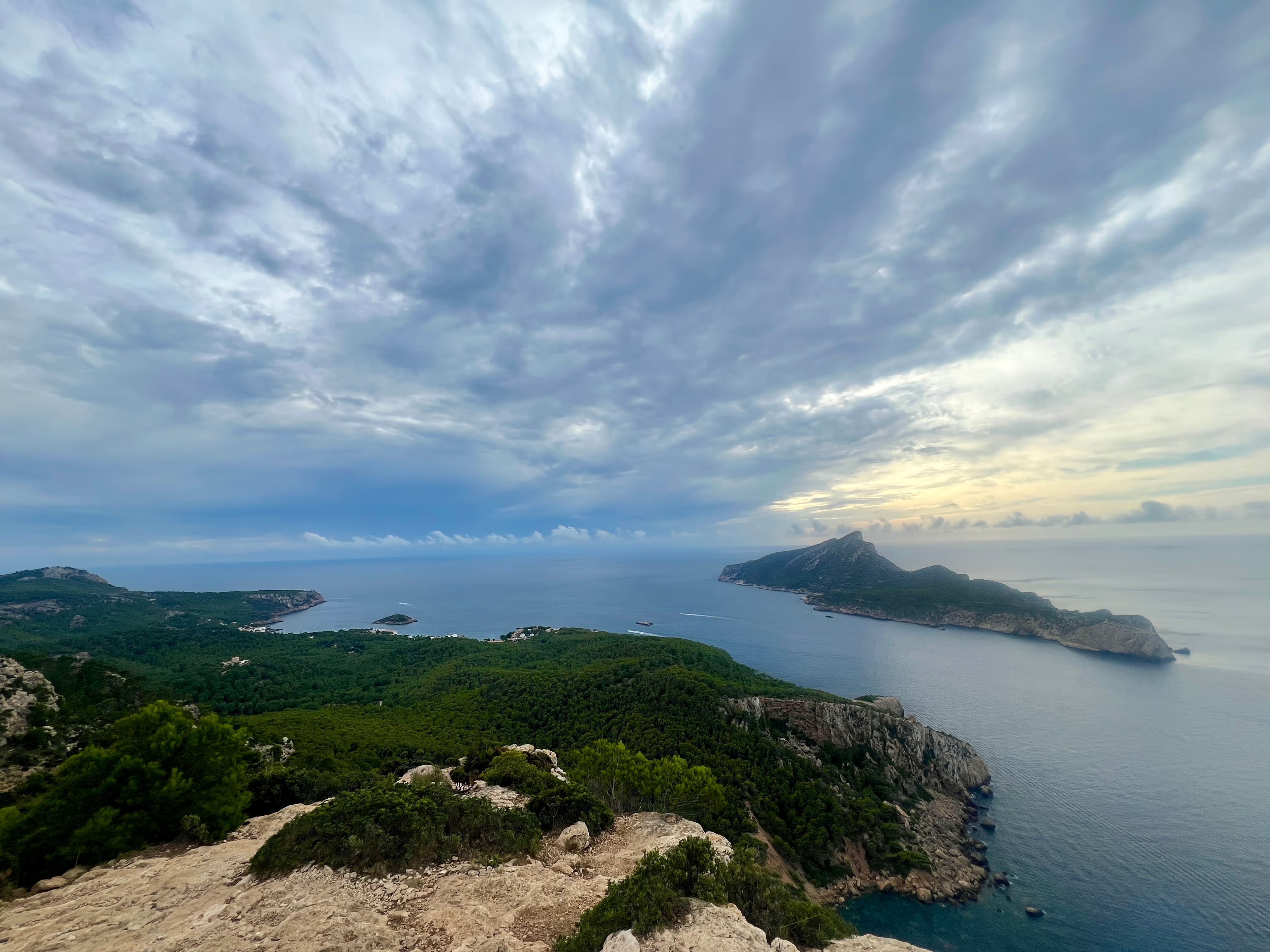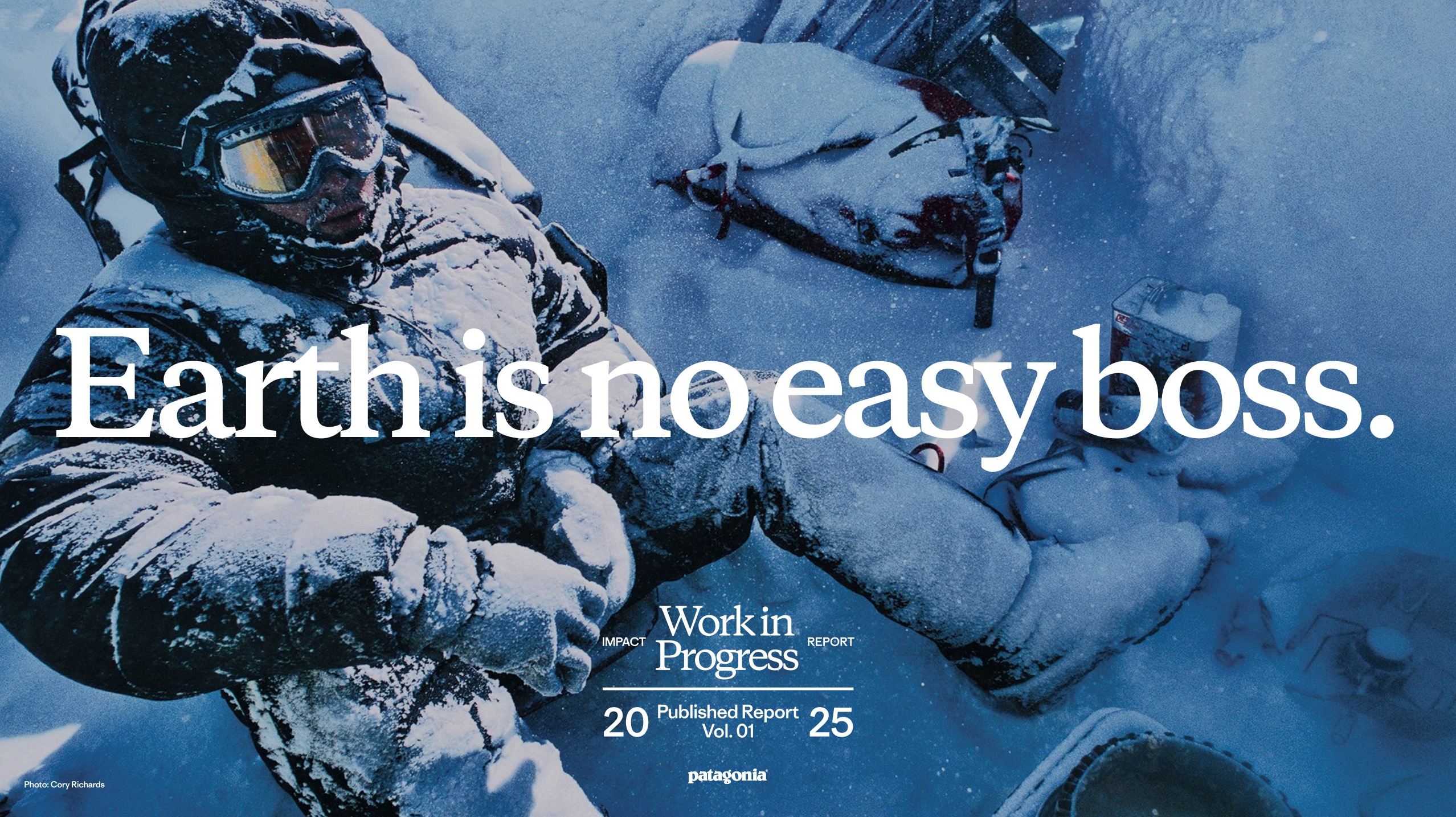It’s 75 degrees, sunny, and I’m standing on the top of a pass admiring a sweeping mountain landscape. I’ve spent the last two hours on a quad-busting ascent, climbing 3,000 ft up a winding stone trail, to meet my friends coming from the opposite direction. I’m a fit person, but the climb definitely took me by surprise. I’ll be honest, when buying a last minute flight to join friends for a few days in Mallorca, I wasn’t thinking about mountains, tough climbs, and rugged trails. But here, with this view, I’m pleasantly surprised and excited for the next few days of hiking.
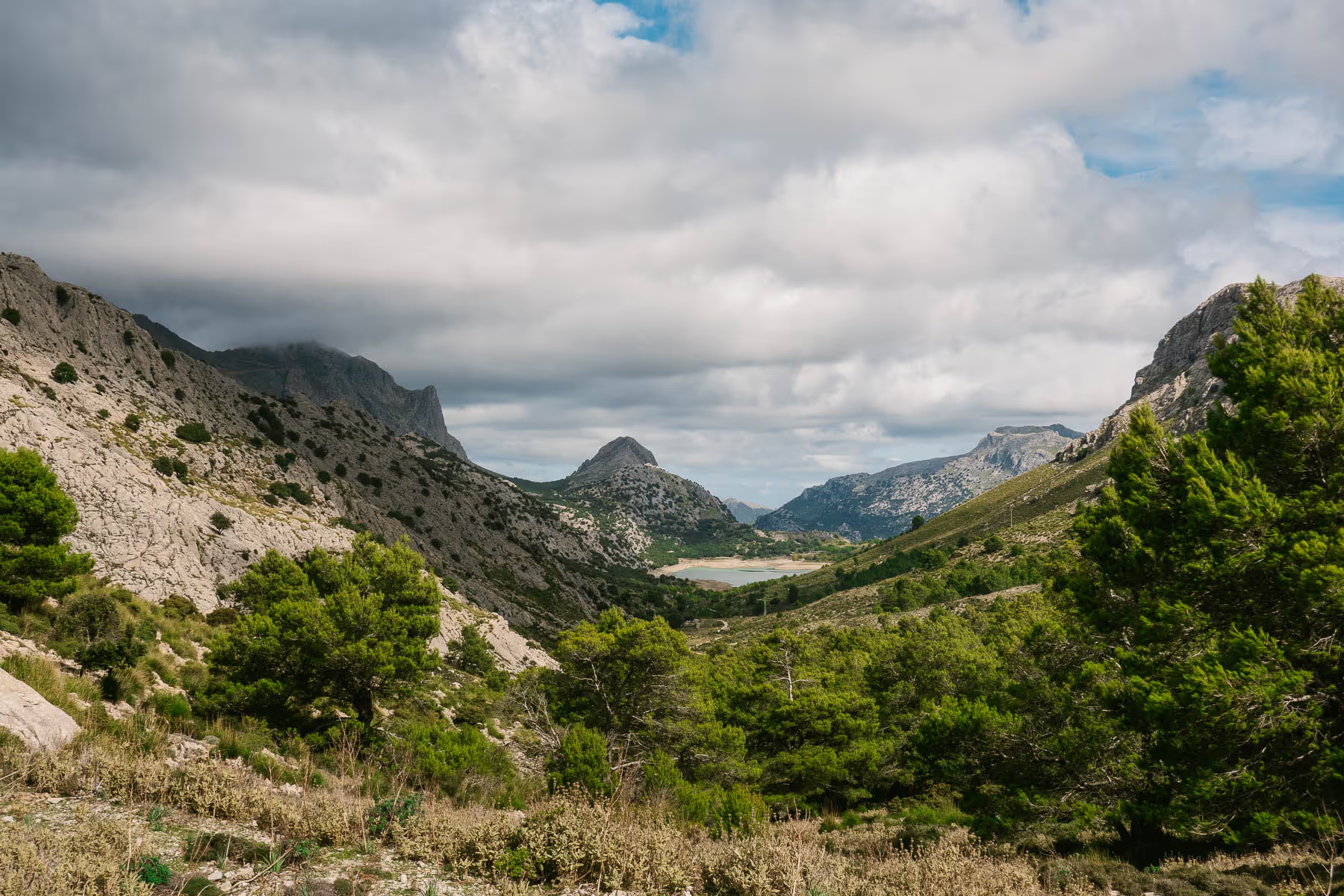
I spent some time in Mallorca last week exploring the GR221 and taking a much needed break from work. The GR221 is a ~140 km trek that crosses the island of Mallorca and is broken into 8 stages. It has a few different start/end points, depending on your personal preference. Depending on the stage, there are options to stay in serviced huts (just don’t expect Alps-level “serviced”), or in the towns you pass through along the way. While there’s nothing on the route that can be considered technical, as I quickly discovered, it’s no casual stroll, either – the “Ruta de la Pedra en Sec” or “Dry Stone Path” can take a toll on your feet. My friends started from Pollença earlier in the week and tackled the first half without me. I flew to Palma on Wednesday and wandered the city for a bit before taking a bus to Sóller and joining up for the second half from Sóller to Sant Elm. The majority of hikers walk the opposite way, but based on timing, we decided that it would be more enjoyable to end with some of the most scenic coastal sections.

Our days were spent hiking on the stone trails or sometimes along roads connecting various sections of trail. There’s not exactly a full through-trail as you might find in the US, it feels more like a patchwork of sections connected by stretches of dirt road and pavement. Depending on your approach, there’s often not a lot of infrastructure in between sections but a selection of tapas or paella and a local beer will make up for that in the evening. The final section approaching Sant Elm was the highlight for me, with views of the ocean most of the way and a landscape that felt like a combination of Big Sur, San Diego, Mexico, but also wholly unique.
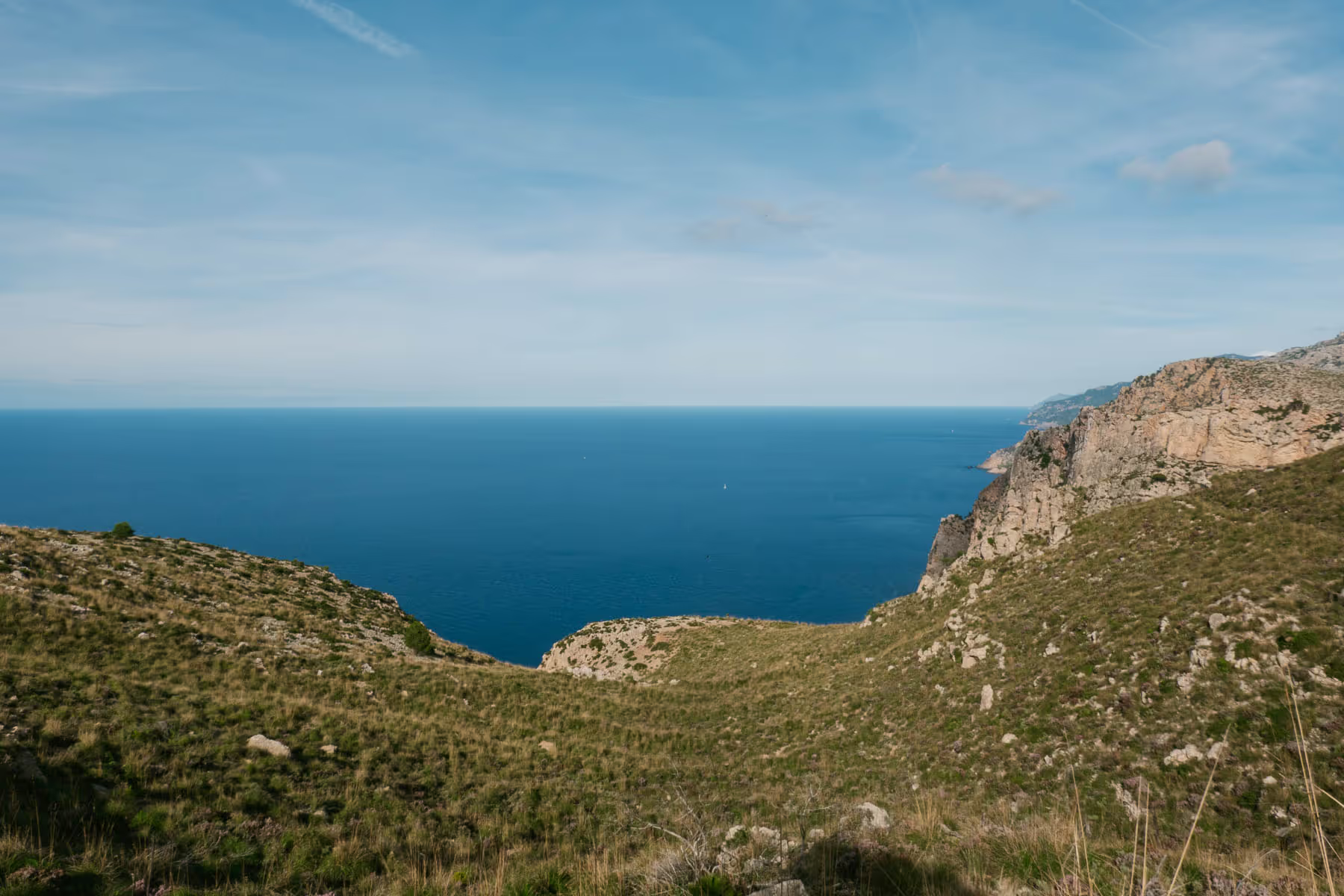
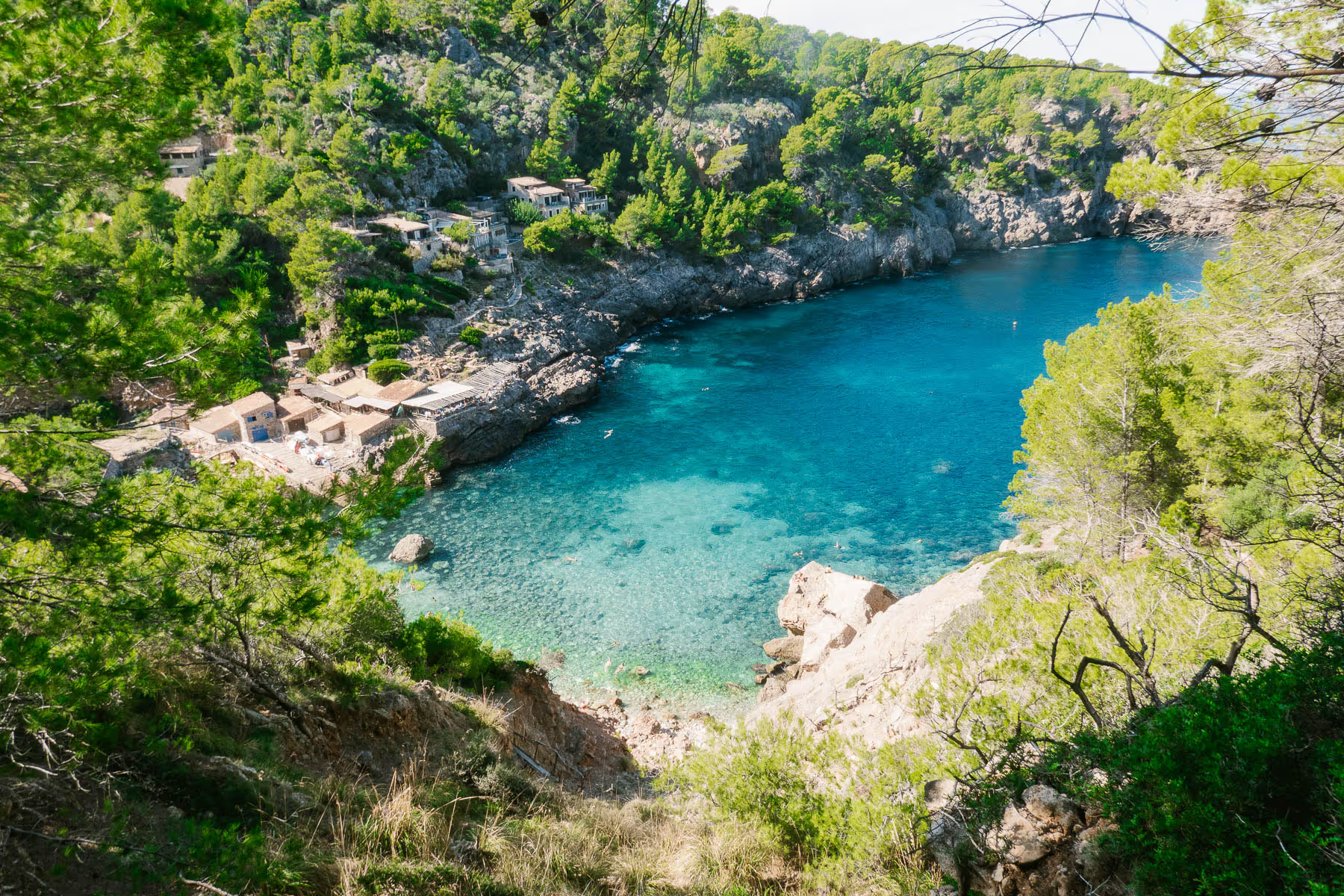
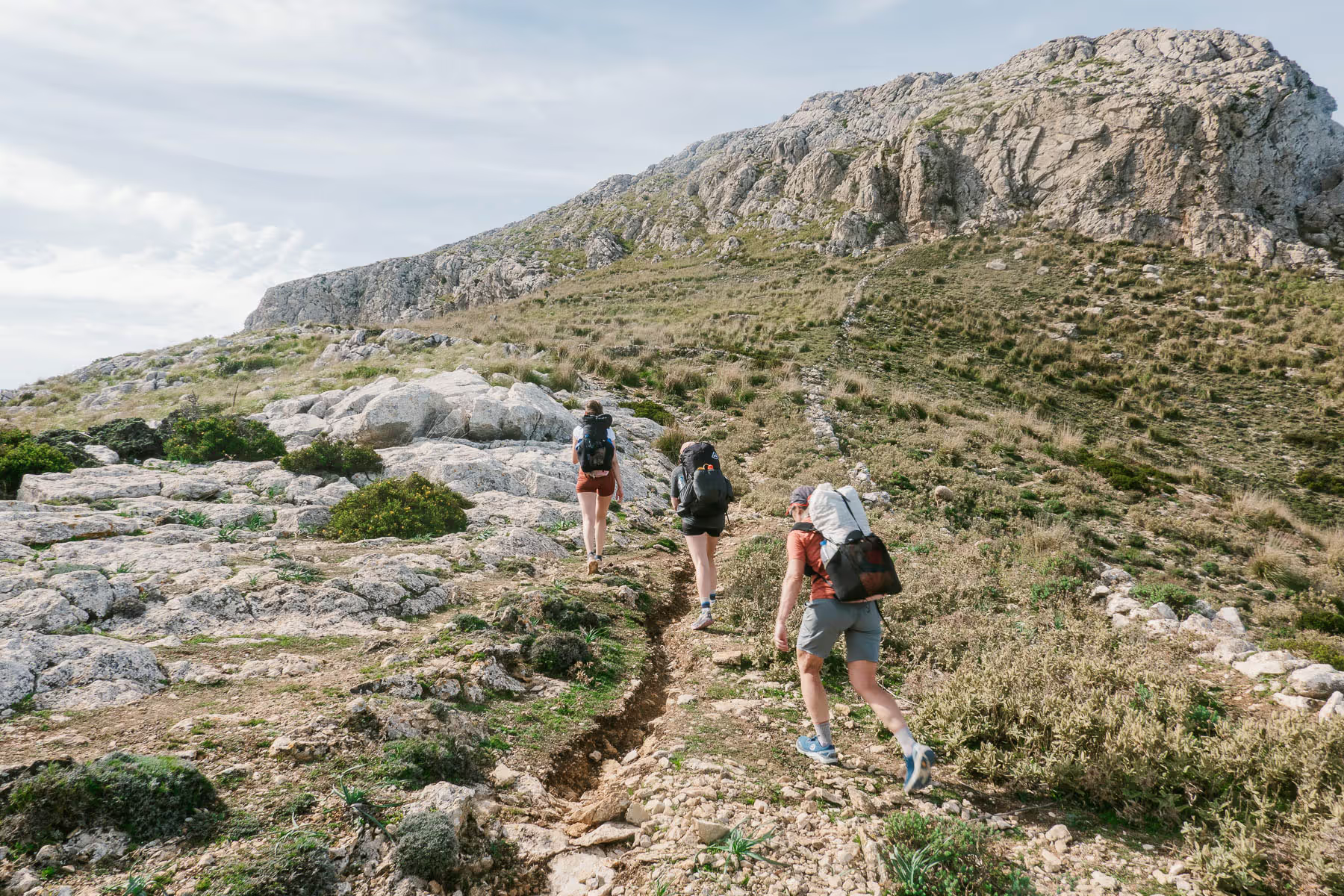
It really is a quite an interesting trail. Because you pass through towns reasonably often, and the weather is usually either hot or mild, it's easy to pack super light (besides water, there's not much of that in between towns). I wore trail runners, and carried everything in a (not full) 28L pack, with a few extra things like a swimsuit, sandals, and my camera.
The other side of Mallorca
As we were enjoying our Mallorcan vacation, the other side of tourism on the Balearic Islands made itself visible in nearly every town we passed through. Tourism in Mallorca presents a complicated reality. While tourism undeniably fuels the economy, provides jobs, and is deeply ingrained in the island's fabric, its unchecked growth has created a host of challenges for locals.
The town of Sóller (where I saw Liverpool legend Jurgen Klopp out for a hike) has been hard hit by the influx of tourists. Signs for SOS Sóller are hard to miss while walking around town, a grassroots activism campaign for better tourism management. Some of the tourism growth can likely be attributed to effective marketing – a single ticket combines a train to Soller + a local tram to the nearby coastal town of Port de Sóller, resulting in an influx of day-trippers from Palma and increased visibility for the area. The problem has resulted in crowding, congestion and traffic problems, and difficulties for local housing in the area.
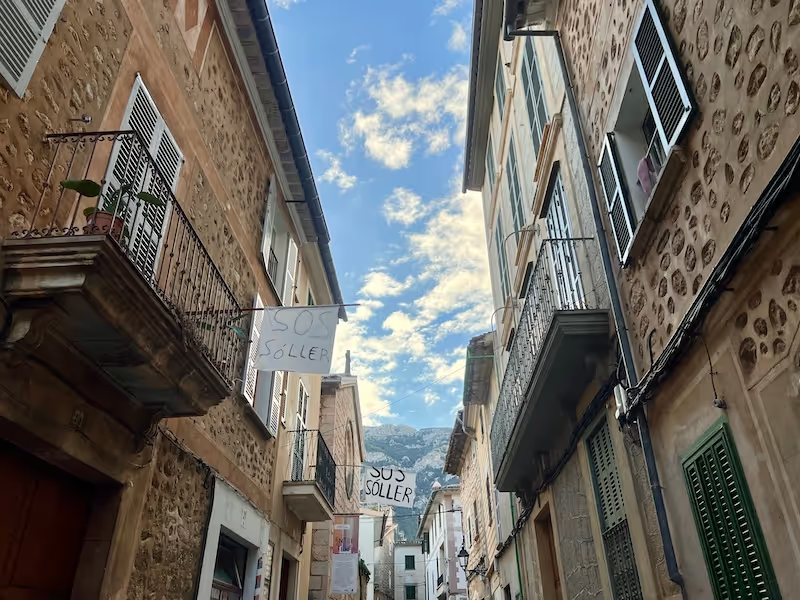
There’s also a prevailing stereotype that the British tourists who stick to the bars and clubs of Palma and Magaluf are problemattic. A few of the anti-tourism protests targeted areas known to be popular with UK travelers. But, the great back and forth between tourism as an economic driver and a destroyer continues – after a drop in UK visits this summer (potentially due to perceptions of safety around the protests), Mallorcan tourism organizations sent an “urgent message” to UK tourists, encouraging them to still travel to Mallorca. The result? 27% more UK tourists visited Mallorca at the beginning of than last year.
While Brits in Magaluf may be a highly visible problem, German tourists also have a long relationship with the island. I know the Germans love to hike, and holy smokes do they also love Mallorca. I joked that it would make more sense to greet other hikers by saying “Hallo”, instead of “Hola”, there were so many Germans on the trail. While other nationalities were represented on GR221 and across the island, the vast majority of our interactions with other tourists were heavily skewed German. There’s even a town near Palma that both locals and Germans joke is basically an extension of Germany. S'Arenal is basically a German exclave, with German restaurants that serve German beer and food, German clubs with German music and hotels with German speaking staff.
An influx of tourists and new holiday home owners (both German and other nationalities), particularly post-pandemic, has driven up property prices, making it increasingly difficult for locals to afford housing. The situation is exacerbated by legal structures that make it difficult to tax foreign property owners, limiting the island's ability to regulate the market and mitigate the impact of tourism on housing. Some left-leaning political parties are pushing for limits on foreign investment as a way to curb gentrification and housing issues. However these kinds of regulations are likely to violate EU freedom of movement laws; some warn that “a regulatory measure that prohibits or limits the purchase of homes in the Balearics by non-residents ‘would restrict the two fundamental freedoms of the Treaty, such as the freedom of establishment and the free movement of capital’”.
How do we write about travel?
It’s kind of an interesting experience to try and figure out if you’re part of the problem. In this case, probably not. But, as we’ve seen here, the problem isn’t exactly tourism, it's a cascade of effects from a place becoming popular to local real estate, congestion, tourism styles, and more. I think it is important to at least try and understand or be aware of these kinds of things when we travel. I wrote a piece a few years ago that criticized the lack of depth from influencers getting paid to visit Saudi Arabia. The general thesis wasn’t to “not travel”, it was to actively consider how you travel and promote places (if that’s part of your job). Maybe that means avoiding certain areas, or having a better sense of what to expect. Maybe that means shifting an itinerary or choosing to go somewhere else. For example, I would probably avoid both Sóller and Port de Sóller next time – there are equally wonderful and less impacted places to visit on the island.
I feel like most travel writing and promotion in 2024 has one flavor – “Hey, visit here, it’s great”. Influencer culture has narrowed the scope of storytelling, minimizing meaningful reflections and stories in favor of nicely packaged Instagram posts, snappily edited TikToks, and SEO-optimized blogs that are more about appealing to every possible Google search. Heck, you don’t even have to focus on negative stuff (I often have a habit of doing this)–but anything that doesn’t feel like ChatGPT wrote it or a PR company edited it would be nice. Integrating unique and/or complicated topics doesn’t detract from the allure of travel; I think it offers travelers a richer picture of the places they’re visiting. Travel, at its best, is about connection—not just to beautiful landscapes and shareable experiences but to the stories, history, and context of these places.
I know I’m being critical. We don’t always travel to “think”, we travel to escape. There’s a place for all types of travel, and all types of writing. But having participated in my fair share of surface level coverage and destination talking points in the past, I want my ongoing focus to be writing that inspires people to travel, and also provides a little something extra. I miss sharing photos, I enjoy sharing interesting places and experiences, and I hope to continue to do so, in my own style.


